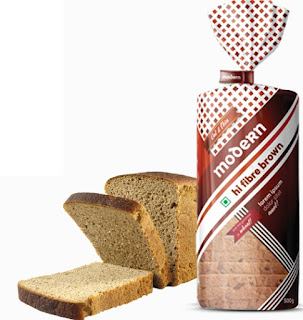For long, common notions have kept white bread in the category of unhealthy foods. The bread eating world has gradually shifted to brown bread instead. While white bread has been shunned due to extra amounts of processed substances, experts suggest that white and brown breads are almost alike when it comes to nutritional value. However, the results aren’t conclusive and you may decide what’s good for you.
Some do suggest that multigrain bread and brown bread have added benefits. Here are some points that differentiate between the two types of breads.
Manufacturing Process
Brown bread is moulded without removing the germs and bran. The process conserves the nutritional value of the bread. White bread, on the other hand is bleached with chlorine dioxide gas, potassium bromate and other compounds after removing the bran and wheat germ from the flour. These compounds have considerable effects on the health if consumed in higher quantities.
Nutritional Value
The general notion regarding brown bread being healthier is somewhat true. It contains higher contents of fibre which is derived from whole wheat used to make brown bread. White bread, for that matter has higher proportions of calcium but lower amounts of fibre. Brown bread holds additional amounts of nutrients like Vitamin B-6 and E, manganese, zinc copper and folic acid. You can find white bread with added nutrients and fibre in certain brands.
Glycemic Index
The glycemic index is related to carbohydrates that affect the levels of blood sugar. It is obvious that foods with a lower glycemic index are healthier. Brown bread contains lesser carbohydrates as compared to white bread. Therefore, the former doesn’t affect the sugar levels and helps in maintaining a healthy lifestyle. Moderated levels of blood sugar decrease the risk of heart diseases, diabetes and obesity. It may be said that brown bread makes a better option for sandwich bread for mid-day snacks.
Calories
A healthy lifestyle requires a regulated calorie intake. White bread contains added sugar and therefore is high on calories when compared to brown bread. While it is not entirely a bad thing, you are advised to eat no more than a couple of pieces of white bread a day.
However, all the types of brown bread available in the market are not made out of whole grain. White bread can be coloured brown with caramel. On the other hand, there are efforts to make white bread healthier. Therefore, always make sure you read the ingredients before buying bread. It makes all the difference between a healthy and unhealthy diet!
Some do suggest that multigrain bread and brown bread have added benefits. Here are some points that differentiate between the two types of breads.
Manufacturing Process
Brown bread is moulded without removing the germs and bran. The process conserves the nutritional value of the bread. White bread, on the other hand is bleached with chlorine dioxide gas, potassium bromate and other compounds after removing the bran and wheat germ from the flour. These compounds have considerable effects on the health if consumed in higher quantities.
Nutritional Value
The general notion regarding brown bread being healthier is somewhat true. It contains higher contents of fibre which is derived from whole wheat used to make brown bread. White bread, for that matter has higher proportions of calcium but lower amounts of fibre. Brown bread holds additional amounts of nutrients like Vitamin B-6 and E, manganese, zinc copper and folic acid. You can find white bread with added nutrients and fibre in certain brands.
Glycemic Index
The glycemic index is related to carbohydrates that affect the levels of blood sugar. It is obvious that foods with a lower glycemic index are healthier. Brown bread contains lesser carbohydrates as compared to white bread. Therefore, the former doesn’t affect the sugar levels and helps in maintaining a healthy lifestyle. Moderated levels of blood sugar decrease the risk of heart diseases, diabetes and obesity. It may be said that brown bread makes a better option for sandwich bread for mid-day snacks.
Calories
A healthy lifestyle requires a regulated calorie intake. White bread contains added sugar and therefore is high on calories when compared to brown bread. While it is not entirely a bad thing, you are advised to eat no more than a couple of pieces of white bread a day.
However, all the types of brown bread available in the market are not made out of whole grain. White bread can be coloured brown with caramel. On the other hand, there are efforts to make white bread healthier. Therefore, always make sure you read the ingredients before buying bread. It makes all the difference between a healthy and unhealthy diet!

Comments
Post a Comment